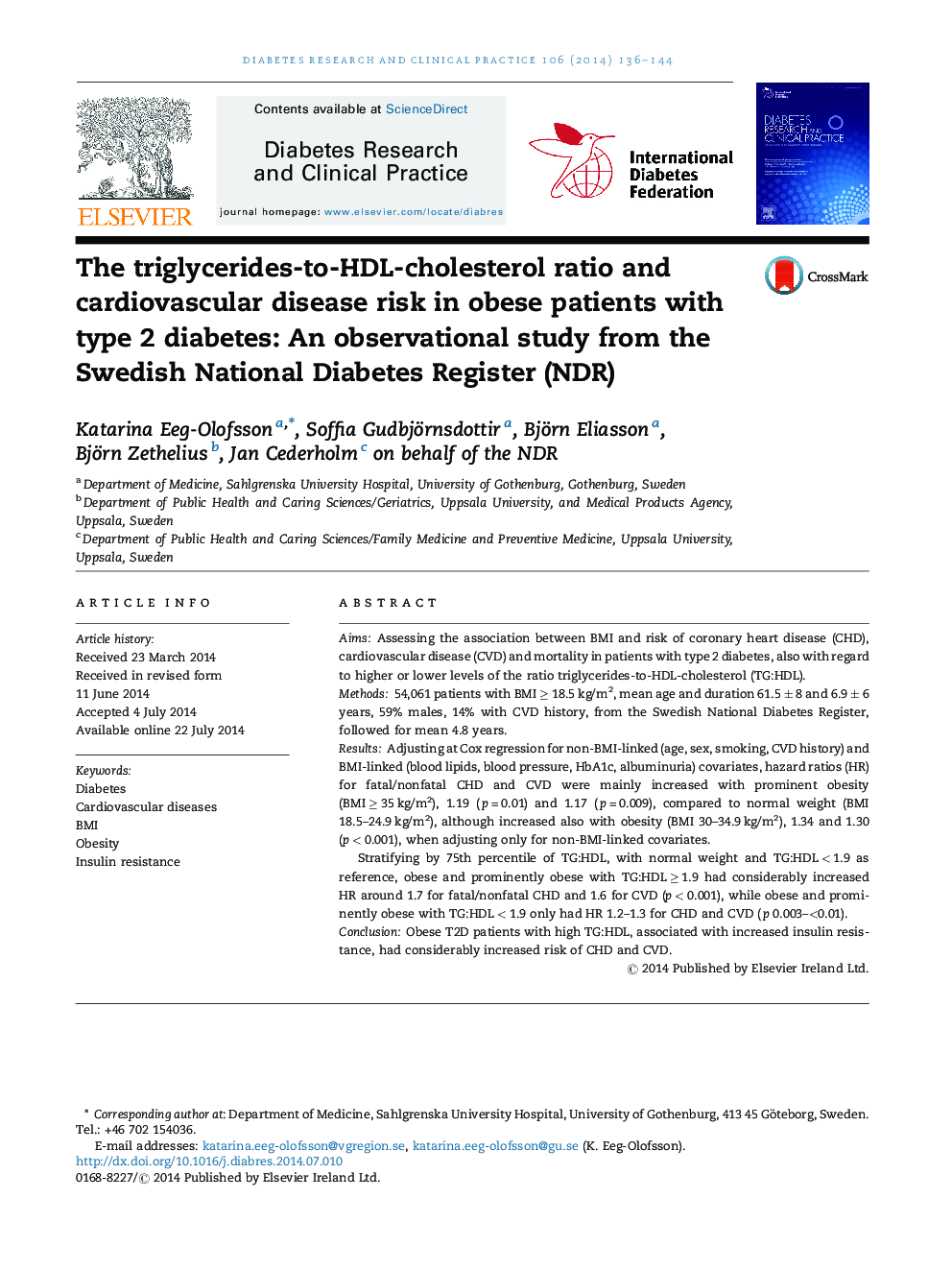| Article ID | Journal | Published Year | Pages | File Type |
|---|---|---|---|---|
| 2796640 | Diabetes Research and Clinical Practice | 2014 | 9 Pages |
AimsAssessing the association between BMI and risk of coronary heart disease (CHD), cardiovascular disease (CVD) and mortality in patients with type 2 diabetes, also with regard to higher or lower levels of the ratio triglycerides-to-HDL-cholesterol (TG:HDL).Methods54,061 patients with BMI ≥ 18.5 kg/m2, mean age and duration 61.5 ± 8 and 6.9 ± 6 years, 59% males, 14% with CVD history, from the Swedish National Diabetes Register, followed for mean 4.8 years.ResultsAdjusting at Cox regression for non-BMI-linked (age, sex, smoking, CVD history) and BMI-linked (blood lipids, blood pressure, HbA1c, albuminuria) covariates, hazard ratios (HR) for fatal/nonfatal CHD and CVD were mainly increased with prominent obesity (BMI ≥ 35 kg/m2), 1.19 (p = 0.01) and 1.17 (p = 0.009), compared to normal weight (BMI 18.5–24.9 kg/m2), although increased also with obesity (BMI 30–34.9 kg/m2), 1.34 and 1.30 (p < 0.001), when adjusting only for non-BMI-linked covariates.Stratifying by 75th percentile of TG:HDL, with normal weight and TG:HDL < 1.9 as reference, obese and prominently obese with TG:HDL ≥ 1.9 had considerably increased HR around 1.7 for fatal/nonfatal CHD and 1.6 for CVD (p < 0.001), while obese and prominently obese with TG:HDL < 1.9 only had HR 1.2–1.3 for CHD and CVD (p 0.003–<0.01).ConclusionObese T2D patients with high TG:HDL, associated with increased insulin resistance, had considerably increased risk of CHD and CVD.
